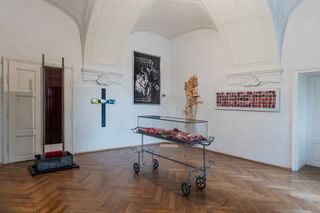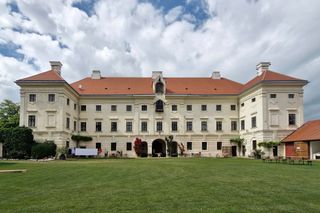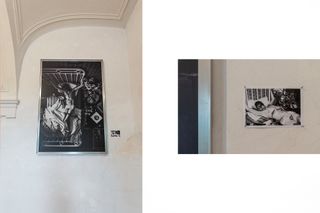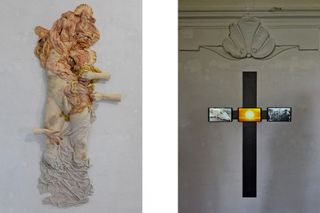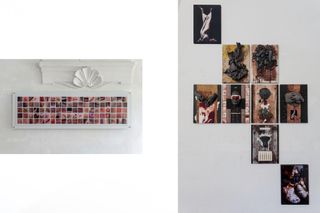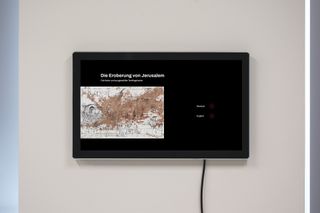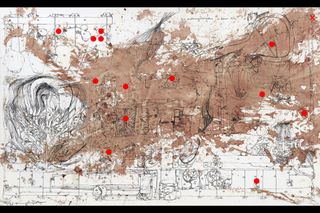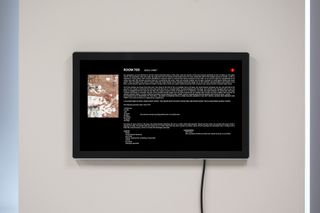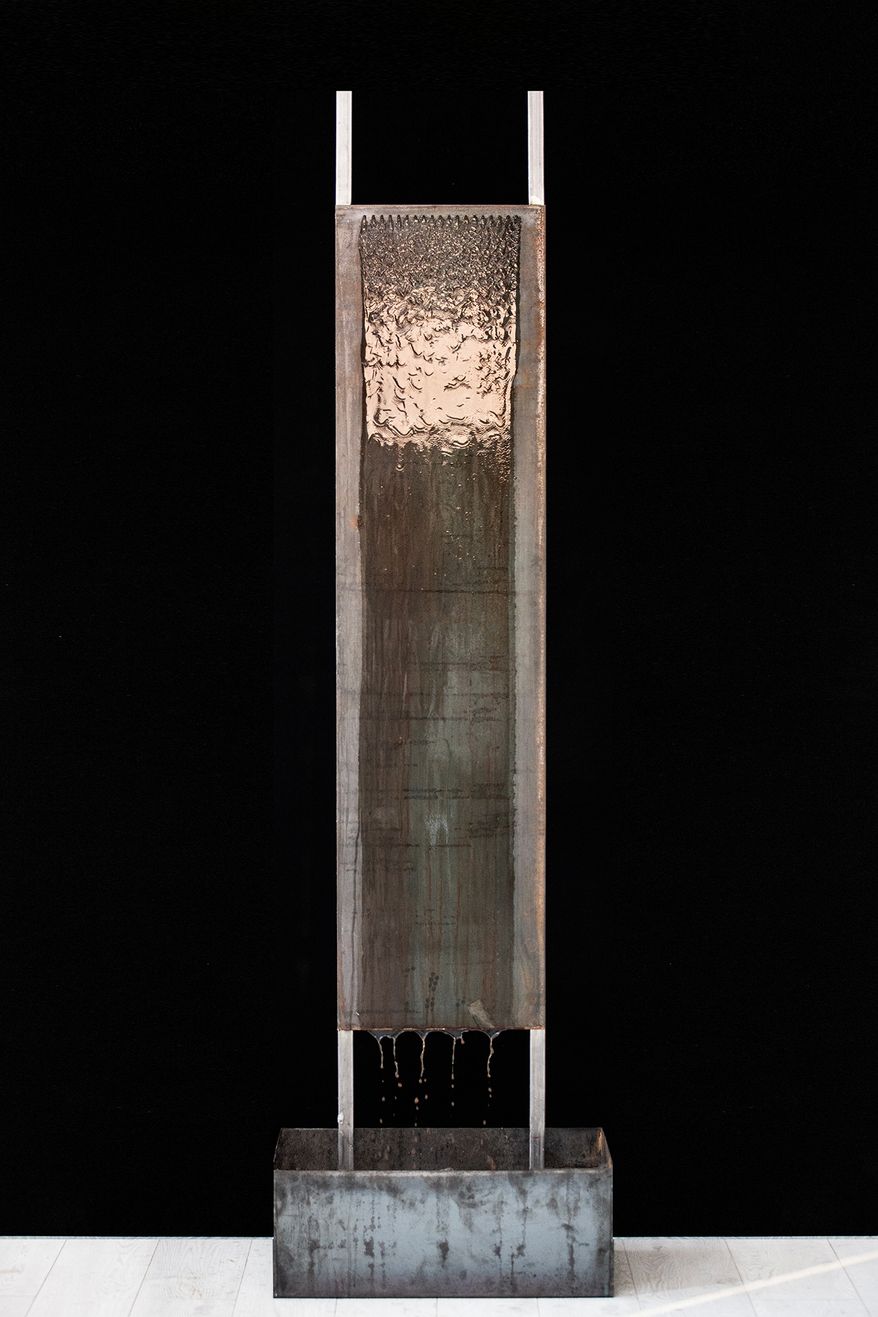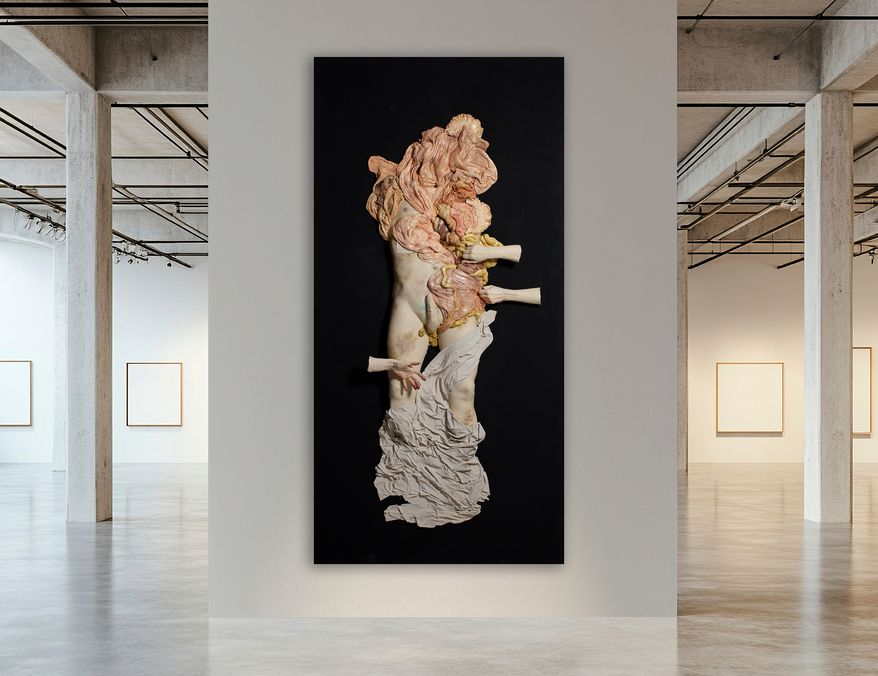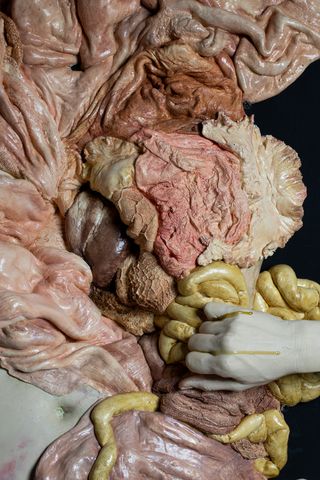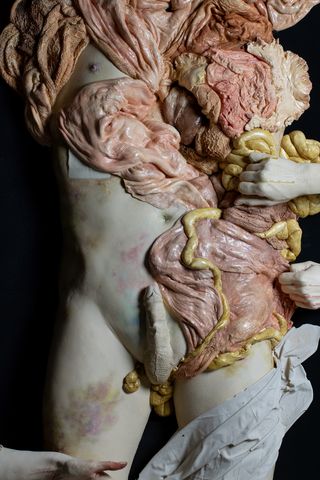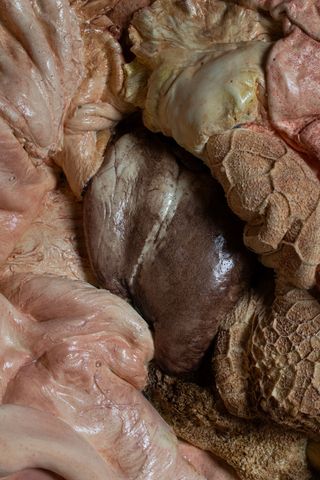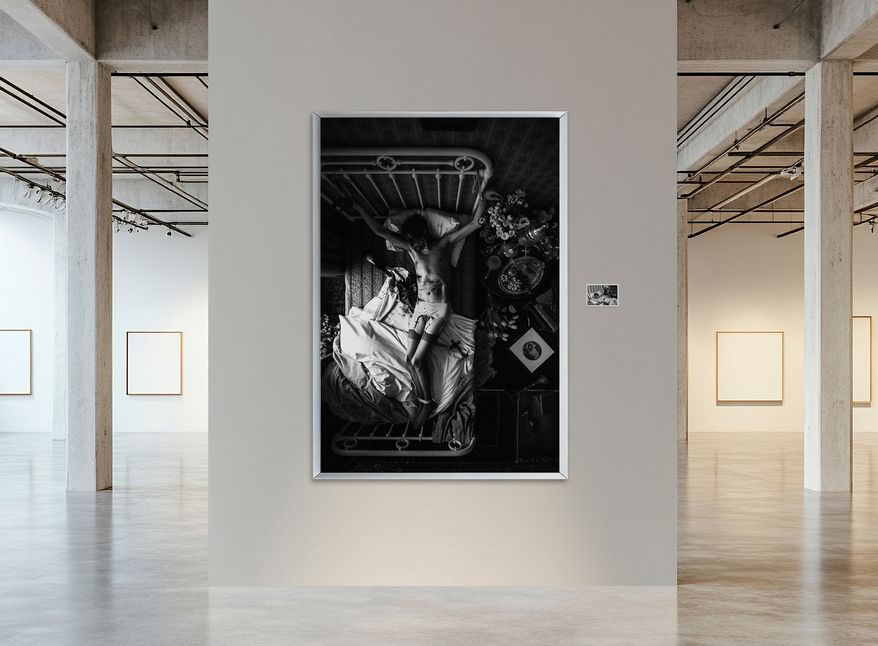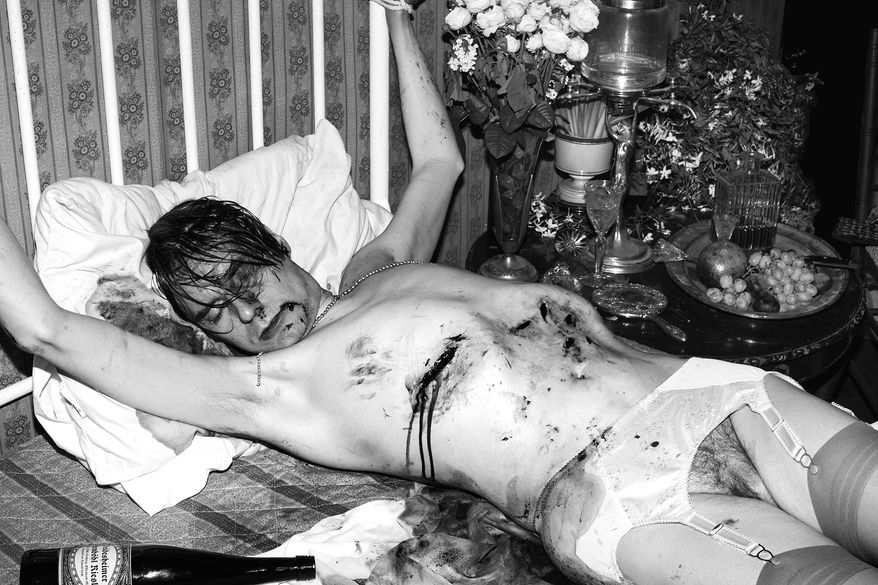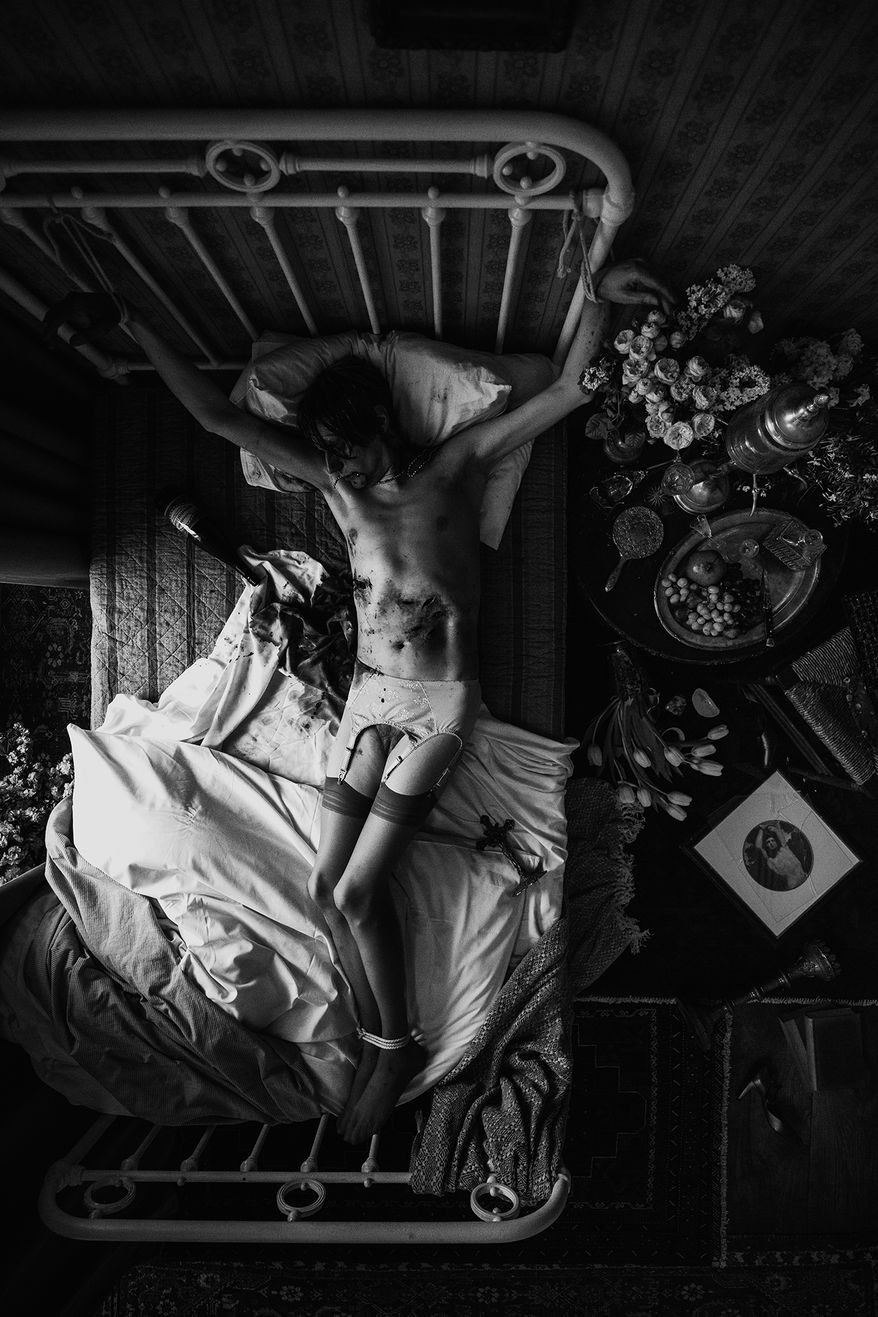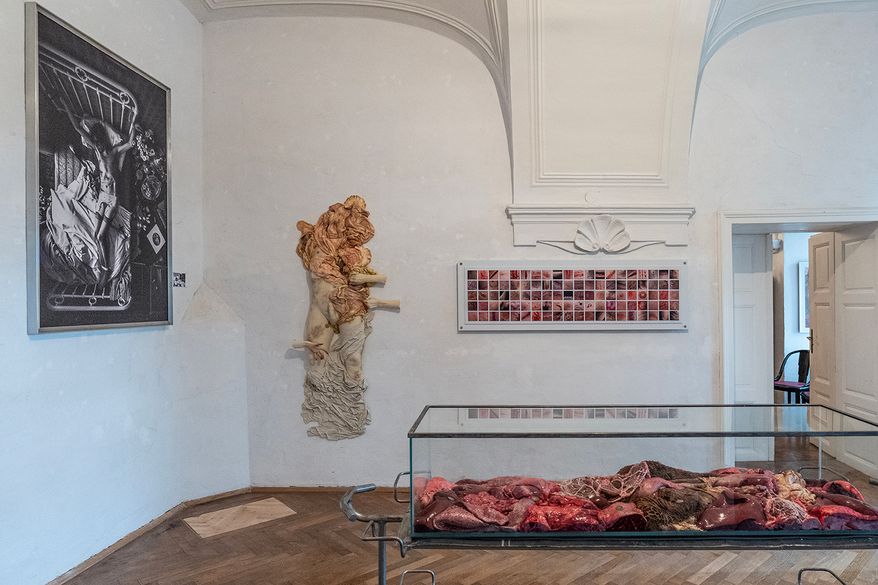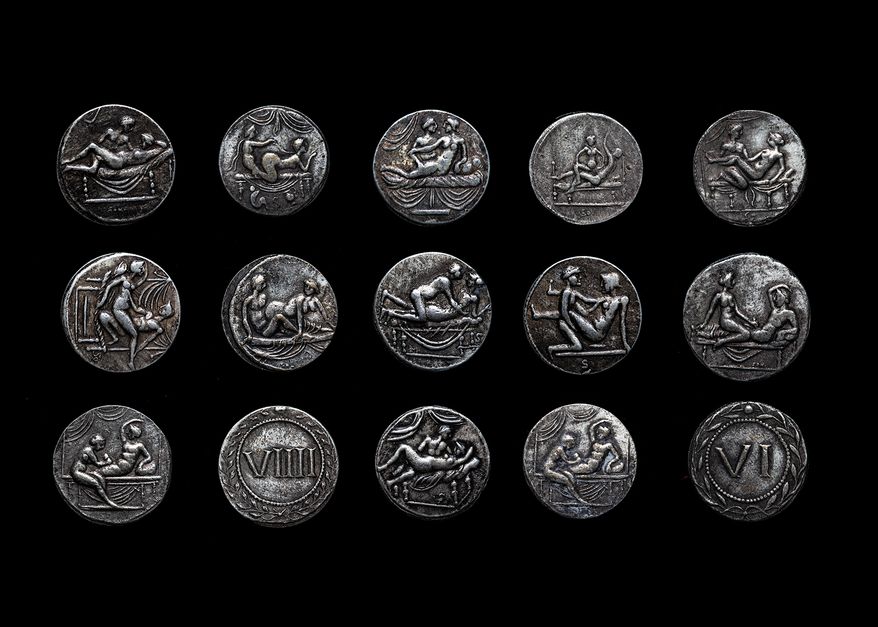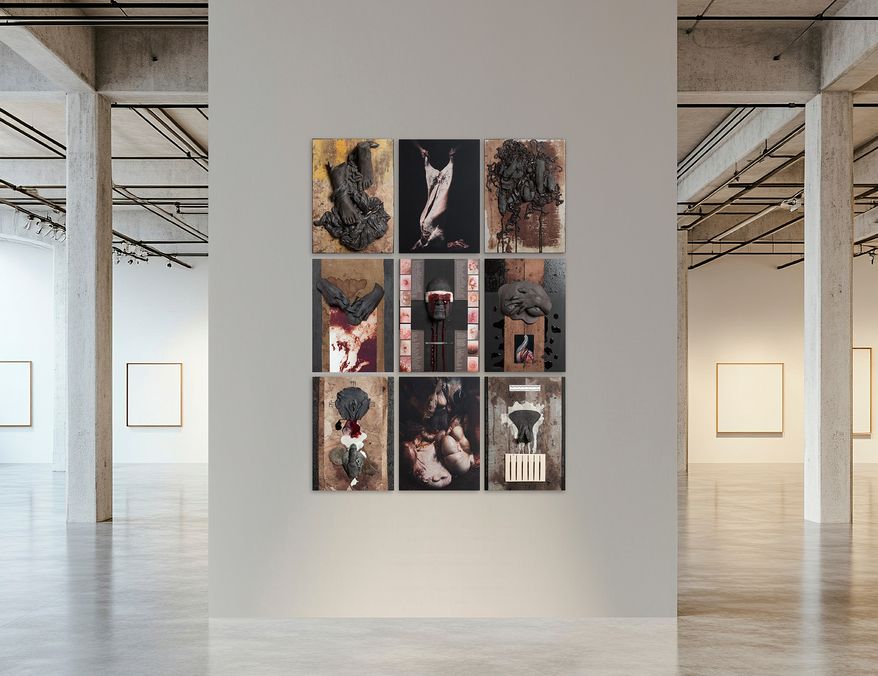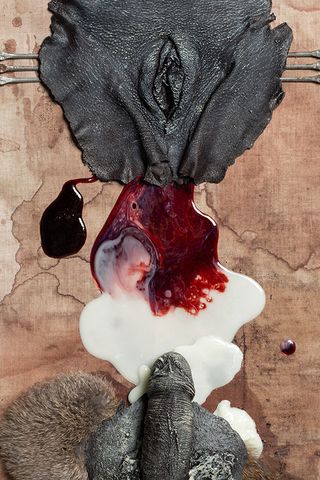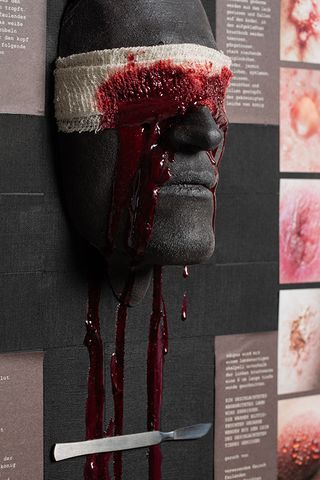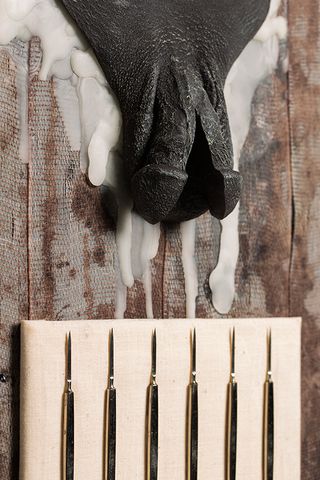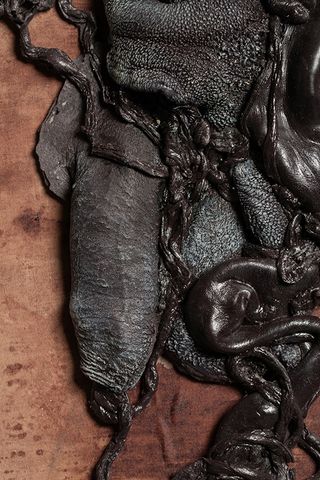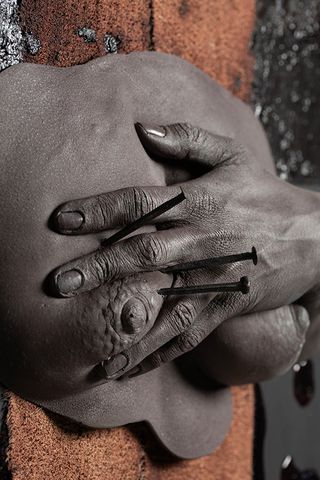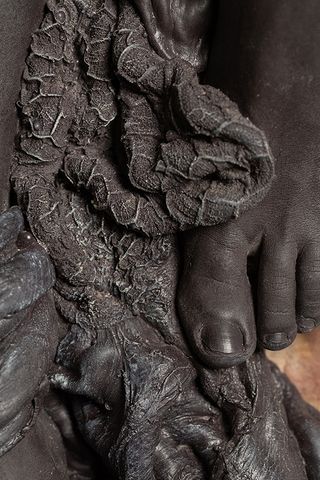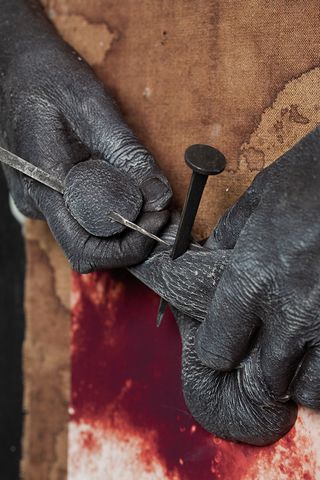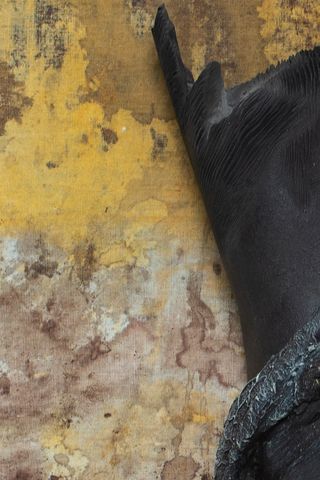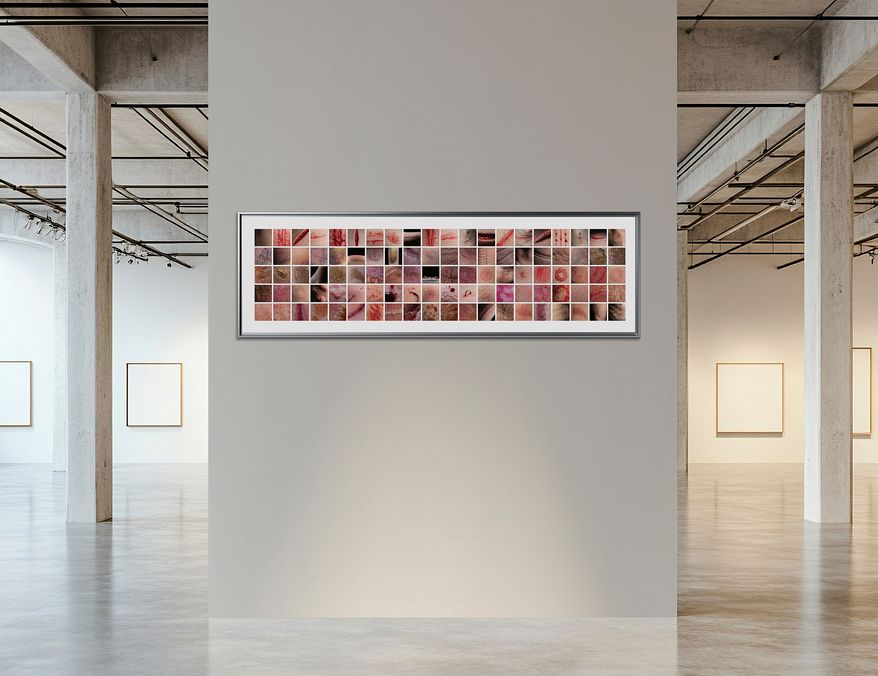Room no. 328 - The Terrible Splendour
Room no. 328 - The Terrible Splendour is a multimedia installation, inspired by Hermann Nitsch’s concept drama’ The Fall of Jerusalem.
Regarded as the cruellest work in Nitsch’s oeuvre and deemed unperformable due to its violent and pornographic nature, The Fall of Jerusalem describes hundreds of ritualistic actions to be staged in 1087 rooms of a mythical subterranean realm. Unable to deliver the multi-sensory stimulation that characterises Hermann Nitsch’s physical and synaesthetic actions, The Fall of Jerusalem compensates through a cacophonous maximalism of pulverising intensity. A sprawling and sustained orchestration of sounds, odours and ritual activities, far too numerous to ever realise, harnesses the medium of language and pushes it through the limits of imagination.
In his notes, Nitsch calls for cries of 1720 cattle, bleating of 1254 sheep, squeals and grunts of 1150 pigs … 330 horns, 220 trumpets, 315 trombones…. 400 oxen are driven through corridor 428, 500 pregnant sheep are driven through corridor 81... In another typical paragraph, 3,967,800,000,000,000,000,000,000 monstrances are required, followed by descriptions of bodily mutilations, natural disasters, and other cataclysmic events. The score is accompanied by an extensive map of the underground system of tunnels and chambers drawn in the shape of organs without a body, where these sado-masochistic acts unfold. With all human laws and moral norms cast aside, inner drives break through and activate a Dionysian energy that simultaneously self-destructs, procreates and transforms.
Through photography, video, sculpture and installation, I focused on the main protagonists of the drama – Nero, Caligula, Oedipus, Dionysus, Jesus Christ, and Esosis – who undergo this ordeal of unrestrained depravity, primal excess, death and universal resurrection. Room no. 328 - The Terrible Splendour is also a tribute to Nitsch’s most dangerous and controversial work, and an attempt at understanding his lifelong preoccupation with aggression and transgression as a means to experience life in its totality.
The Fall of Jerusalem was written throughout the late 60s and early 70s during Nitsch’s stay at Harmating, in Upper Bavaria, Germany. It was first published in a fine bibliophile’s edition of 75 copies in 1974, followed by an edition of 1000, in reduced format, as issue no. 17 of Günter Brus’ magazine Die Drossel, three years later. The English edition, which became the source material for this project, came out in 1997 through Atlas Press and was limited to 312 numbered copies.
The installation was on display at the Prinzendorf castle of Hermann Nitsch during the staging of the last three days of the 6-day-play from the 7th until the 9th June 2025. The limited edition print of the map of the subterranean city and selected publications of The Fall of Jerusalem were on display in the adjacent room.
Bilingual interactive screen with map and selected text fragments
To access the content, visit: Die Eroberung von Jerusalem
Touch screen
ESOSIS / 2025
Freestanding black steel 'bleeding stretcher'.
Steel, water pump, hoses, blood.
Size: H 2400mm x D 40mm. Base W 600mm x D 400mm x H 270mm.
Esosis
Video
Jesus Christ / 2025
Photographs. H 1700mm x W 1150 mm and 127mm x 170mm.
Jesus Christ
CALIGULA / 2025
Medical table c.1950s, with bespoke glass case. Set of Roman brothel tokens, XIX century replicas. Animal entrails.
Size: L 1900mm x H 1116mm x W 620mm
Caligula
Dionysus / 2025
A video installation created with original and found footage. Duration 2.6 min on a loop.
Dionysus / installation
Dionysus - video
OEDIPUS / 2025
Mixed media: urethane resin, canvas, paint, blood, photographs, steel tools, wax.
W 420mm x H 597mm. Total size W 1300mm x 1840mm.
Oedipus
Oedipus / detail
The Torture of the 100 Pieces / 2014-2020
One hundred photographs. Size: L 1780mm x H 558mm.


